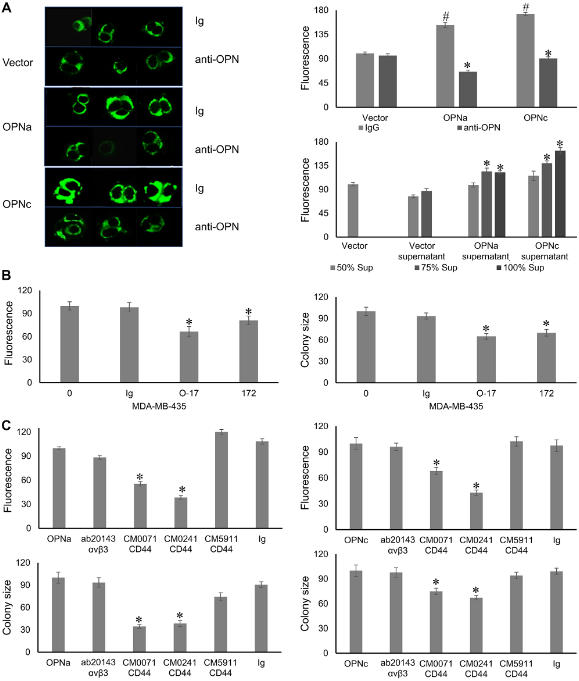Dr. Georg F. Weber, from the University of Cincinnati Academic Health Center, James L. Winkle College of Pharmacy, details a research paper he co-authored that was published by Oncotarget in Volume 14, entitled, “Osteopontin induces mitochondrial biogenesis in deadherent cancer cells.”
Behind the Study is a series of transcribed videos of researchers elaborating on their oncology-focused research published by Oncotarget. Visit the Oncotarget YouTube channel for more insights from outstanding authors.
—
Metastases have been very difficult to treat, in part because they’re very different from the primary tumors from which they originate. One aspect is the unique metabolism of metastasizing cells. It is very different from the Warburg effect or aerobic glycolysis that arises in most primary tumors.
This Warburg effect was originally reported about a century ago. It is the paradoxical finding that, despite the increased energy requirements of cancers, the primary tumors preferentially use glycolysis over mitochondrial ATP generation. Even though glycolysis generates fewer molecules of ATP per molecule of glucose than the mitochondrial respiration does.
Contrasting to the primary tumors, metastases activate the oxidative phosphorylation by mitochondria. Now, any release of an epithelial or mesenchymal cell from their substratum compromises the glucose uptake, which leads to a deficient a ATP-based chemical energy production.
It ends in a form of programmed cell death dubbed anoikis. This is the mechanism untransformed epithelial and mesenchymal cells are subject to. Metastasizing cells need to overcome this energy deficit in order to survive and establish colonies in distant organs.
Over short timeframes, oxidative phosphorylation and ATP generation are prominent. Over longer timeframes, mitochondrial biogenesis becomes a pronounced feature and it aids metastatic success. The phenomena of mitochondrial activation and mitochondrial biogenesis were originally reported separately, by our lab and by the Raghu Kalluri group in 2014.
While there had been occasional literature reports to this effect before, those two studies really were the first ones to describe decisive observations. That the metabolism in metastasizing cells is clearly distinct from the Warburg effect that arises in primary tumor cells.
Since then, it has not been known whether or how these two phenomena, meaning mitochondrial activation and mitochondrial biogenesis, are connected. We had shown that variants of the metastasis mediator osteopontin are important in the short term activation of the mitochondria and in ATP generation.
We recently hypothesized that osteopontin splice variants also increase the mitochondrial mass, means also induce the biogenesis via the same signaling mechanisms. We now report that autocrine osteopontin does indeed stimulate an increase in mitochondrial size, with the splice variant osteopontin-c being more effective than the full-length form osteopontin-a.
Osteopontin-c achieves this via its receptor CD44, jointly with the up-regulation and co-ligation of the chloride-dependent cystine/glutamate transporter with the genetic name SLC7A11. So these two receptors are co-ligated by osteopontin-c. The induced signaling proceeds through the activation of the known mitochondrial biogenesis inducer PGC-1, which acts as a transcriptional coactivate.
In this cascade of signal transduction, peroxide is an important intermediate. Surprisingly, our data show that the peroxide is not produced by mitochondrial decoupling. Decoupling has been so often invoked in the literature and it was a little bit problematic, because decoupling leads to a less efficient energy production.
So, we show that decoupling is not the mechanism for peroxide generation. Rather, peroxide acts upstream of PGC-1. It is likely produced as a consequence of SLC7A11 recruitment and activation. This channel has previously been associated with redox activity, so we are now putting the pieces of the puzzle together.
In vivo, suppression of the biogenesis-inducing mechanisms via the antioxidant NAC, N-acetyl cysteine, via the PGC-1α, chemical inhibitor SR-18292, or with a specific antibody to osteopontin-c splice variant, an antibody that was raised in our lab. All of these three lead to a reduction in dissemination of tumor mass, or in disseminated tumor mass.
So in vivo, these mechanisms are important for metastatic spread of the tumors. Our study confirms a functional connection between the short-term oxidative metabolism and the longer-term mitochondrial biogenesis in cancer metastasis. Both are induced by osteopontin-c, which is an important mediator of cancer dissemination for a number of different malignancies.
Now, the mitochondrial involvement implies possible mechanisms of and targets for treating cancer metastases. We are still falling short of successfully targeting the metastasizing or metastasized cells.
As we more understand these mechanisms, we open up new opportunities for treatments that were previously not conceived of, and hopefully will be able to target and suppress metastases either in their formation or after they have already been established.
Click here to read the full study published by Oncotarget.
—
Oncotarget is a unique platform designed to house scientific studies in a journal format that is available for anyone to read—without a paywall making access more difficult. This means information that has the potential to benefit our societies from the inside out can be shared with friends, neighbors, colleagues and other researchers, far and wide.
For media inquiries, please contact media@impactjournals.com.
